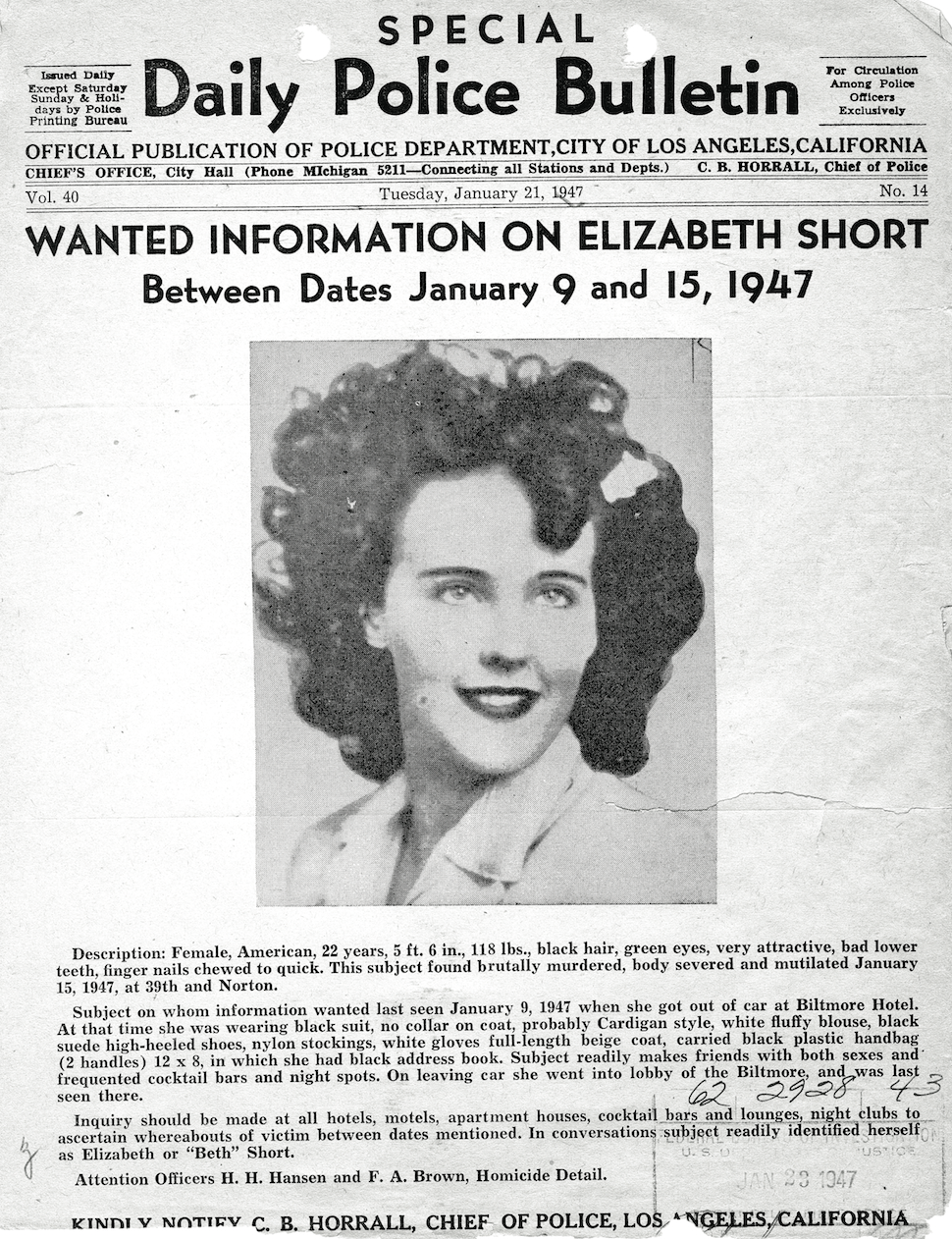Elizabeth Short, a 22-year-old aspiring actress, was discovered brutally murdered in Los Angeles on January 15, 1947.
Her body had been cut in half, and a horrifying smile had been carved into her face.
The murder of Elizabeth Short, also known as the “Black Dahlia,” remains one of Los Angeles’ oldest cold cases.
Not only was it a horrific crime, but it has proven to be notoriously difficult to solve.
Over the decades, the Black Dahlia murder has captivated the attention of police, the press, and amateur sleuths.
Numerous convincing theories have emerged, but the identity of the killer remains a mystery.
The murder took place in the neighborhood of Leimert Park in Los Angeles.
A mother out for a morning walk with her child was the first to stumble upon the gruesome scene.
Initially, she mistook Short’s body for a mannequin due to the way it had been posed.
However, upon closer inspection, the true horror of the crime became evident.
Short’s body had been severed at the waist and drained of blood.
Some of her organs had been removed and neatly placed beneath her buttocks.
Her thighs and bre-sts had pieces of flesh cut away, and her stomach contained feces, suggesting she may have been forced to eat them before her death.
The most chilling mutilations were the lacerations on her face, which extended from the corners of her mouth to her ears, creating a grotesque smile known as the “Glasgow smile.”
Detectives from the Los Angeles Police Department determined that Short must have been killed elsewhere and then dumped in Leimert Park since her body had been thoroughly cleaned.
Near the crime scene, investigators found a heel print and a cement sack stained with blood, presumably used to transport Short’s body.
To identify the victim, the LAPD enlisted the help of the FBI, who searched their fingerprint database.
Short’s fingerprints were quickly found since she had previously applied for a job at a military camp in California and had been arrested for underage drinking.
The media soon got hold of Short’s identity and began reporting salacious details about her life.
Her mother, Phoebe Short, was informed of her daughter’s death by reporters pretending to deliver good news of Elizabeth winning a beauty contest.
The truth was revealed only after they had gathered all the information they could about her.
As the case garnered media attention, Elizabeth Short was portrayed as a s**ual deviant.
Police reports suggested that she had multiple s**ual partners and had been seen with numerous men before her death.
False rumors circulated, accusing her of being a prostitute or a lesbian who enjoyed teasing men.
Short had moved to Los Angeles only six months before her murder, hoping to pursue a career in Hollywood.
However, she had no significant acting jobs during her time there, and her tragic death became her only claim to fame.
Despite the widespread coverage and public interest, authorities struggled to identify the killer.
Several clues emerged, including a phone call and a package sent to The Los Angeles Examiner.
A person claiming to be the murderer called the Examiner, promising to send Short’s belongings as proof of his claim.
The package arrived with items such as her birth certificate, photos, and an address book with the name Mark Hansen on the cover.
The sender also included a letter made from clippings of newspaper and magazine letters.
Unfortunately, the evidence had been wiped clean with gasoline, eradicating any fingerprints.
Another letter arrived, indicating a meeting that never took place.
All































